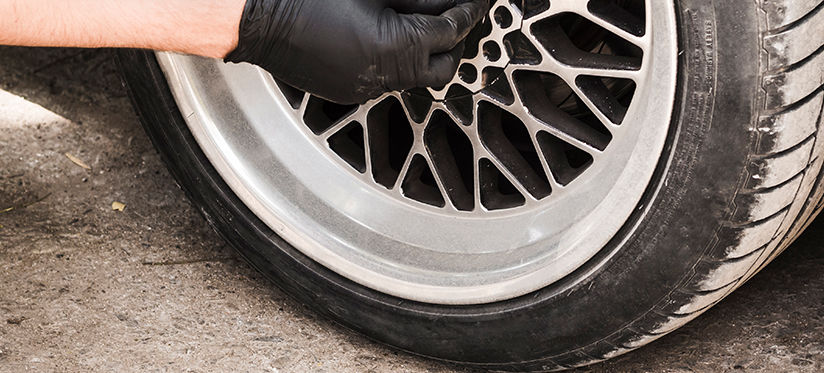
When it comes to selecting tyres for your vehicle, the options can seem endless, with various classifications and specifications to consider. Two common tyre types that drivers often come across are SL (Standard Load) and C1. These classifications indicate different load ranges and performance capabilities tailored for specific vehicles and driving conditions. In this comprehensive guide, we'll delve into the differences between SL and C1 tyres, their load range specifications, and which might be the better choice for your passenger car.
What are SL (Standard Load) Tyres?
SL, or Standard Load, tyres are designed to meet the needs of most passenger cars, offering a balance of performance, comfort, and load-carrying capacity. These tyres are ideal for everyday driving scenarios, providing a smooth and comfortable ride for typical commuting and highway use.
Features of SL Tyres:
Load Range:
SL tyres are designed to carry a standard load capacity, suitable for most passenger cars and sedans. You should also know everything about all car tyre pressure to determine the specifications of more tyres.
Comfortable Ride:
These tyres offer a comfortable and smooth ride quality, ideal for daily commuting and highway driving.
Performance:
SL tyres provide adequate performance for regular driving conditions, including good traction and handling.
Versatility:
They are versatile tyres suitable for a wide range of temperatures and weather conditions.
Advantages of SL Tyres
Comfortable Ride:
SL tyres offer a smooth and comfortable driving experience, absorbing road imperfections.
Suitable for Most Vehicles:
Ideal for passenger cars, sedans, and other vehicles that fall within the standard load range.
Good Performance:
These tyres provide sufficient traction, handling, and braking performance for everyday driving needs.
Cost-Effective:
SL tyres are often more budget-friendly compared to tyres with higher load ranges.
Exploring C1 Tyres
What are C1 Tyres?
C1 tyres, on the other hand, are designed for a specific load range that exceeds the standard load capacity of SL tyres. These tyres show the least warning symptoms of bad wheel bearings because they are engineered to carry heavier loads and are often found on larger vehicles. For example - SUVs, crossovers, and light trucks.
Features of C1 Tyres:
Load Range:
C1 tyres have a higher load-carrying capacity compared to SL tyres, making them suitable for larger vehicles.
Heavy-Duty Construction:
These tyres are built with reinforced sidewalls and materials to support heavier loads.
Durability:
C1 tyres are designed to withstand the demands of heavier vehicles, offering enhanced durability and longevity.
Traction and Stability:
They provide excellent traction and stability, especially when carrying heavier loads or towing.
Advantages of C1 Tyres
Higher Load Capacity:
C1 tyres can carry heavier loads without compromising safety or performance.
Durability and Longevity:
Designed for heavy-duty use, these tyres offer enhanced durability and a longer lifespan.
Towing Capability:
Ideal for vehicles used for towing trailers, boats, or other heavy loads.
Improved Stability:
C1 tyres provide better stability and control, especially when the vehicle is fully loaded.
Difference Between SL and C1 Tyres
1. Load Range:
SL Tyres: Standard Load tyres designed for typical passenger cars with standard load capacities.
C1 Tyres: Higher load range tyres suitable for larger vehicles, SUVs, crossovers, and light trucks.
2. Vehicle Compatibility:
SL Tyres: Ideal for most passenger cars, sedans, and vehicles within the standard load range.
C1 Tyres: Designed for larger vehicles that require a higher load-carrying capacity.
3. Ride Quality:
SL Tyres: Offer a smooth and comfortable ride, ideal for everyday commuting and highway driving.
C1 Tyres: Provide a stable and controlled ride, especially when carrying heavy loads or towing.
4. Performance:
SL Tyres: Provide adequate traction, handling, and braking performance for regular driving conditions.
C1 Tyres: Offer enhanced traction, stability, and durability, especially under heavy load conditions.
5. Durability and Longevity:
SL Tyres: Offer good durability and longevity for standard passenger car use.
C1 Tyres: Designed for heavy-duty use, providing enhanced durability and a longer lifespan.
6. Cost:
SL Tyres: Generally more budget-friendly compared to tyres with higher load ranges.
C1 Tyres: May be priced slightly higher due to their heavy-duty construction and load-carrying capacity.
Which Should You Choose for Your Passenger Car?
Choose SL Tyres if:
You drive a standard passenger car or sedan with typical load requirements.
Comfort and smooth ride quality are important factors for your daily commute and highway driving.
You are looking for cost-effective tyres that provide adequate performance for regular driving conditions.
Choose C1 Tyres if:
You drive a larger vehicle such as an SUV, crossover, or light truck that requires a higher load-carrying capacity.
Towing capability and stability under heavy loads are essential for your driving needs.
You prioritize durability, longevity, and enhanced traction for heavy-duty use.
Also Read: Tyre Speed Rating: All You Need To Know
In Conclusion
SL (Standard Load) and C1 tyres are designed to meet the needs of different vehicles and driving conditions, offering varying load ranges, performance capabilities, and durability. SL tyres are ideal for most passenger cars, providing a comfortable ride and adequate performance for everyday driving scenarios. On the other hand, C1 tyres are engineered for larger vehicles with heavier load requirements, offering enhanced stability, towing capability, and durability.
Select the tyres that best match your vehicle's needs, ensuring optimal safety, performance, and longevity on the road ahead. Prioritize tyre maintenance, regular inspections, and proper inflation to maximize the lifespan and performance of your chosen tyres, ensuring a smooth and safe driving experience for you and your passengers.

